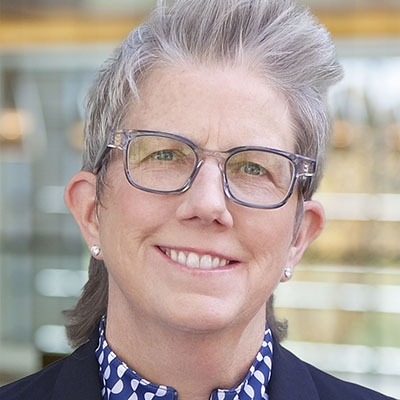 According to a new study from Forrester Consulting and sales enablement platform Outreach.io, 66% of sales leaders believe it’s important for their teams to represent the world around them. During a time of digital and cultural transformation in sales, the study identified the three areas of focus for sales leaders in 2022: DEI, investing in upskilling sales talent and improving forecasting.
According to a new study from Forrester Consulting and sales enablement platform Outreach.io, 66% of sales leaders believe it’s important for their teams to represent the world around them. During a time of digital and cultural transformation in sales, the study identified the three areas of focus for sales leaders in 2022: DEI, investing in upskilling sales talent and improving forecasting.
“B2B Leaders Usher In A New Era of Sales” surveyed 212 sales leaders who represent more than 20 industries at companies with headquarters in the U.K. and North America. Key findings from the research include:
- 82% of sales leaders want their CEO to take a stand on social issues;
- Organizations have invested or plan to invest in internal sales training for their managers (85%) and sales reps (89%);
- Forecasting is ineffective and inefficient at many organizations, as 60% of respondents said they don’t have a well-defined or scientific approach to forecasting; and
- Diversity, equity, and inclusion (DEI) is taking center stage, with 69% of respondents indicating that buyers are asking about their stance on social justice and 67% of respondents saying it’s important for their teams to represent the world around them.
To dig deeper into the findings and understand more about the elements fueling these cultural and technological shifts, Demand Gen Report sat down with Mary Shea, Global Innovation Evangelist at Outreach and former Forrester Principal Analyst, to discuss the research.
Demand Gen Report: In the face of these cultural changes and specific workplace demands, how has the role of technology evolved?
Mary Shea: You’d have to be living under a rock to not see the trajectory that sales technology providers — specifically non-CRM salestech companies are on right now, in terms of investments and valuations. What we’re seeing now is that we have a predominantly Millennial sales force, who are digital natives and comfortable utilizing technology on their own. If their company doesn’t have the technology, they need to be successful, they’re probably not join or stay, at that organization. So now sales leaders are under more pressure to re-evaluate their sales tech stacks and they are realizing they need a platform the entire revenue organization can use to be more effective, efficient and drive better experiences for buyers.
As a result, to remain competitive, sales leaders are seeing their tech budgets go up by 70%, and they’re reevaluating their current stacks to make sure that they can put top-tier, innovative technologies in place that sit on top of the CRM. There are so many tools now that sales teams are demanding, and they’re not going to work with companies that don’t have those tools.
DGR: Speaking of Millennials, how have they changed the global workforce aside from technological preferences and demands?
Shea: Sales leaders’ No. 1 challenge across the board was managing a multigenerational sales force. Millennials are more than half of the global workforce, they’re digital natives, they understand the role technology can play in giving them an edge at work, and they demand visibility and transparency from their leaders. I knew that was happening from conversations I had been having with sales leaders, but I didn’t expect managing a multigenerational sales force to be above the economic challenges brought forth by Covid-19 and the rapidly evolving buyer preferences.
When you have an organization made up of Boomers, Gen X, Millennials and now even Zoomers, and add in the mental health pressures from the past two years and “The Great Resignation,” sales leaders need to create and maintain an environment that allows them to attract and retain the best talent — that’s going to be a massive differentiator going forward.
Additionally, after we broke the results down by region between the U.S, Canada, and the U.K., we found that U.K. sales leaders are the ones who are actually leaning in, focusing on and prioritizing hiring and retaining a diverse sales force. Even though everyone’s talking about it in the U.S. markets, they aren’t prioritizing it above other activities. I think U.S. want to embrace these initiatives wholeheartedly, but when I talked to American sales leaders about what the top attributes were for their role, the ability to acquire and retain a diverse sales force was only No. 9 — there were other things that they saw that were more important. I believe U.S. sales leaders want to but may be uncertain about how to execute diversity initiatives.
DGR: Do you have any advice on how B2B organizations could truly unify teams and prioritize those initiatives?
Shea: Juniper Networks, one of our clients, partners with universities that have a large multicultural student body and offer professional sales programs. And Juniper strives to have 20% of its sales interviewers and interviewees to be diverse. So just by starting to put some metrics in place has driven up the diversity within its sales organization considerably. The other thing I recommend is following some of the B2B sales influencers on social media who are cultivating unique and diverse communities of followers.
What sales leaders should also do — and this is what we’re doing at Outreach — is launch a program designed to help our existing sellers, especially the women, rise through the ranks. In terms of gender, our sales force today is about 50/50 — however, we want to do a better job of having more women in sales leadership positions. What we’ve found is that as you get higher up in just about any sales organization, there’s less and less female leadership. Our CRO, Anna Baird, created the RISE, program. The program is designed to help to help our women sellers and managers gain skills, such as building confidence, having difficult conversations, and making sure their voices are heard in the room — all things that have been historically difficult for women across the ranks but but necessary to master to take on executive leadership positions.
DGR: How can sales leaders re-train and upskill their employees to ensure everyone feels valued to retain talent?
Shea: The study found that 85% of sales leaders are investing in re-training and up-skilling employees, which includes doubling down on internal enablement programs and bringing external experts into the organization. This shows that companies across the board are not just training reps; they’re also realizing that their first line manager is so important in the sales organization. Reps will come and go based on the relationship they have with their manager. But historically training and investing in sales managers has been overlooked.
Based on the data, we’re seeing significant investment in helping managers be more successful. It’s so important because the role of a manager is different now; they need to adapt to and leverage technology and coach reps in real time. They can’t just do “ride-alongs” anymore — they need to glean insights from seller data and take actions that deliver measurable business outcomes.
DGR: Finally, what do you believe is the biggest takeaway from the report?
Shea: The biggest takeaway is that over the past two years, heads of sales have come to understand the necessity and urgency of digital transformation within their organization. And I don’t just mean SaaS or tech companies that typically lean into innovation around how they go to market; I’m talking about companies of all shapes and sizes that would usually sit by the sidelines and wait for others to transform. Sales leaders understand the role data and technology play for successful go-to-market execution.
The research clearly revealed that sales leaders understand the impact of these changes in terms of their own skill sets and how they, their line managers, and reps need to adapt and evolve.
Across the board, these leaders understand that B2B buying and selling has changed forever — and there’s no going back.







